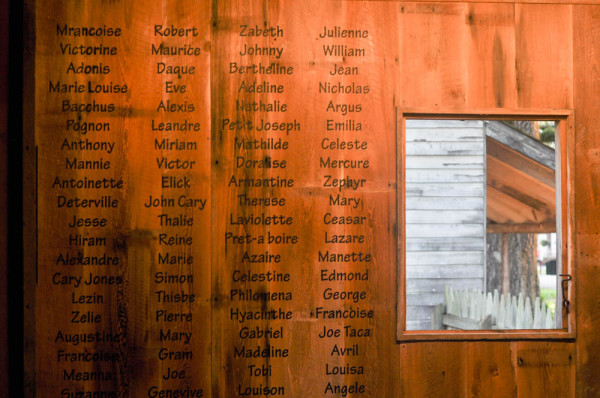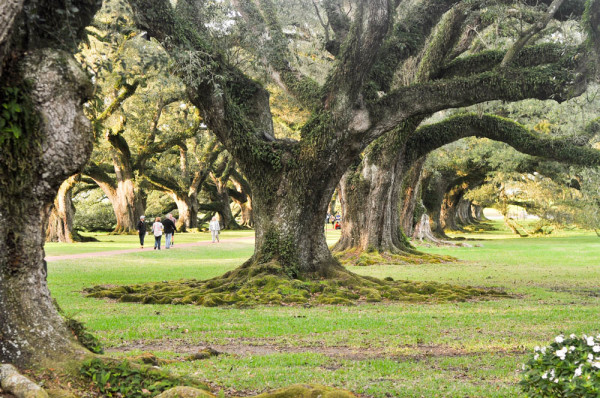Going through difficult times in our lives make us want curl up in a ball and stay in bed. But that’s not my style for too long. I do it for a bit and then I get up. Because what other choice do I have? Keep going or not, right?
I took a little trip this past weekend that made my difficult times seem VERY different (and even “easy” in comparison) than some other humans’ difficult times.
I toured two different plantations between Baton Rouge and New Orleans. It gave me a new perspective. On many things.
And while the plantations were beautiful and the history was interesting and I enjoyed taking photographs, etc.. I couldn’t help but leave with a pit in my stomach. The homes were built by slaves. The sugar cane was grown and cut and processed by slaves. The other crops and animals were raised by and taken care of by slaves. EVERYthing was done by slaves, back when these places were in their prime. Even when slavery was abolished there was nowhere for the newly free people to go, so they usually stayed right where they were and in much the same circumstances, since “payment” was typically not in currency, nor did it amount to very much.
I learned that all the bricks of the homes were made from the mud from the Mississippi river, that is right over the 30 foot levee, and used to only be 10 feet. I learned the names of all 198 slaves that lived and worked at Oak Alley in Vacherie, LA. I learned the names of many of the ones that worked at Laura, a Creole plantation, just 3.5 miles away down the river road, some of them children of one of the “masters”.
These were most of the names of those who toiled at Oak Alley, on a wall in a building that represented a slave’s home. I stood there for a while and thought about each name, picturing faces in my mind and thinking about all they had to go through, how very hard they had to work…


These Live Oak trees, down “oak alley” are over 200 years old.

They were planted this way so that the breeze from the river could go through the alley of trees and then into the house, to keep it cool. Funnily enough the trees were planted this way well before the home was built on the land.
This is the house from the front. It’s very majestic.
So many bricks, made from that mud… on the front walkway and the old barn.
I did take a tour of the home and felt like Scarlet O’hara the entire time… 😉 This was half of the main bedroom upstairs.
These old sugar kettles are now used as small ponds/fountains on the property.
In the garden on one side of the home are several boxwood bushes, which are over 100 years old, planted by the last owner of the plantation.
I spent the night in a small cottage on the property and then had an amazingly delicious plate of French toast for breakfast at the restaurant on site. Seriously, it was some of the best breakfast I’ve had in a while. The local-made syrup (from sugar cane of course!) was a great topping as well. Below is me standing in the cute cottage bathroom, complete with clawfoot tub. I did not take a picture of the French toast. I ate it too fast.
This was my view while I ate. That is “the big house” in the middle, in the background, and to the right of the large Live Oak is one of the slave quarter buildings (rebuilt, but made to represent what they would have lived in).
After I left Oak Alley I visited Laura. This plantation has a really wonderful, historical tour and our tour guide was a well spoken young lady.
Laura was quite different than the previous property because of the Creole influences. It was much more colorful and even their traditions were different than that of most of the people who lived and worked along the great river road, back in those days.
Laura was the great, great granddaughter of the original owners and lived to be 98. And even though she wanted nothing to do with the plantation, it ended up in her hands anyway.
She also has a place in my heart because she was a writer and is the reason that the tour guide has so much information about this property, since Laura wrote about the stories and people she remembered.
These photographs are of Laura, from an infant to an old woman, and one of her in a Mardi Gras ball gown (in the center).
Below is a chart with Laura’s great uncle, Flagy Duparc, on the very top middle. Turns out he was the father of many slaves… It’s complicated. As many families are. We did walk through one of the original slave homes during the tour on this property, and heard about a slave who fought in The Civil War and later fought for his war pension until he finally received it in his 60’s. He was also related to Flagy. The tangled web these folks weaved.
Laura Plantation’s rich and varied history was so interesting to me and the home itself was quite beautiful, even though not as “grand” as Oak Alley.
If you’re ever on the great river road between Baton Rouge and New Orleans I suggest you stop at these two places. They are lovely and are just now getting back to their pre-Katrina numbers as far as visitors, etc.
I believe in supporting local tourism and I love little adventures like this. I hope you enjoyed seeing a little bit of what I experienced at Oak Alley and Laura.
Recent Posts
Our House
I was walking around our backyard tonight at dusk. I looked back at the house…
Still Here.
I'm sorry I wasn't paying attention. I regret it now. Hindsight and all that. …